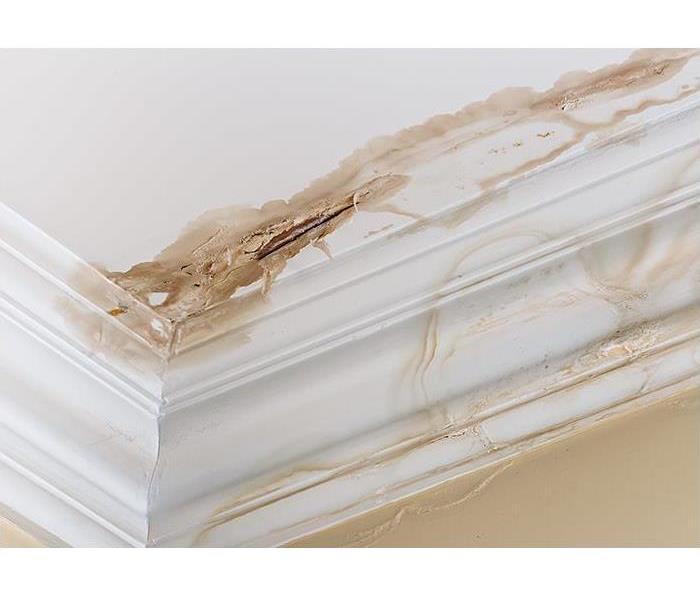GOT MOLD?!
5/9/2018 (Permalink)
Overview
Mold is a major-league nuisance. It blackens the grout lines in your shower, discolors drywall, shows up as black spots on siding, darkens decks, and grows on and rots damp wood everywhere. Even worse, it can be bad for your health. Mold releases microscopic spores that cause allergic reactions, runny noses and sneezing, as well as irritating, even injurious, odors
If you have seepage or a leak that hasn’t been addressed, mold may have infiltrated the drywall and internal surfaces of your home. Disturbing big infestations can be bad for your health, particularly if you are an allergy sufferer or have a weakened immune system. When you discover an extensive mold problem, we recommend that you call in a professional, who knows what kills mold, to handle the problem of how to remove it and stop it at its source. And even if you hire professionals, read through this article to understand how to keep the mold from spreading throughout your house.
How to identify mold
Mold is everywhere. It’s a type of fungus that grows from tiny spores that float in the air. It can grow almost anywhere that spores land and find moisture and a comfortable temperature, between 40 and 100 degrees F. Typically that includes about every damp place in your home.
You can easily spot the most visible type of mold, called mildew, which begins as tiny, usually black spots but often grows into larger colonies. It’s the black stuff you see in the grout lines in your shower, on damp walls, and outdoors on the surfaces of deck boards and painted siding, especially in damp and shady areas. A mildewed surface is often difficult to distinguish from a dirty one. To test for mildew, simply dab a few drops of household bleach on the blackened area. If it lightens after one to two minutes, you have mildew. If the area remains dark, you probably have dirt.
Mildew is a surface type of mold that won’t damage your home’s structure. But other types of mold cause rot. Probe the suspect area with a screwdriver or other sharp tool. If the wood is soft or crumbles, the fungi have taken hold and rot has begun.
If you have a high concentration of mold, you may smell it. If you detect the typical musty odor, check for mold on damp carpets, damp walls, damp crawlspaces and wet wood under your floors, wet roof sheathing and other damp areas. Have these infestations cleaned right away before they get worse.
Tips for Mold Prevention
After the mold is removed from your home, you’ll want to prevent it in the future. The key to stopping most mold is to control dampness. The worst infestations usually occur in damp crawlspaces, in attics and walls where water has leaked in from the outside, and in basements with poor foundation drainage. Stopping leaks, ensuring good ventilation in attics, keeping crawlspaces dry and routing water away from the foundation are the best defenses on how to get rid of mold.
Mildewcide in paint is usually effective for controlling surface mold in damp rooms like bathrooms and outside in shady areas. Many paints already have mildewcide in them. Check with your paint dealer to be sure.
Call a Pro!
If you find mold in your home and have questions or are concerned about the extent of the problem, call SERVPRO of Glenview at 847-832-9300 and we will be glad to do a detailed inspection to find the source of the mold and give you advice about what should be done.





 24/7 Emergency Service
24/7 Emergency Service
